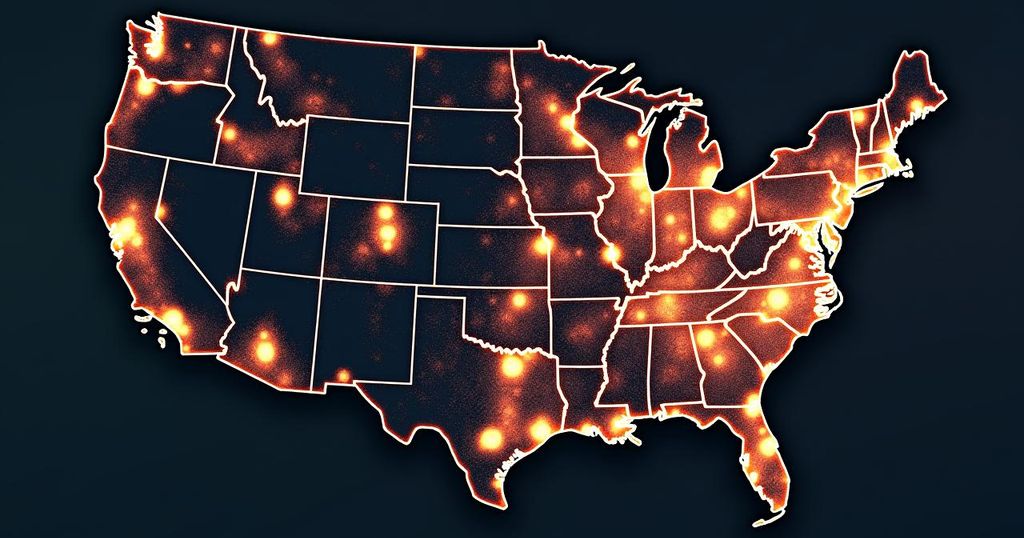Recent Earthquake Activity Report: 4.1 Magnitude Tremor in Montana

On October 7, a 4.1-magnitude earthquake struck Montana, with its epicenter in Dillon. This event followed several recent earthquakes, including a 3.7-magnitude tremor in California two days prior. Notably, the tremors have occurred in various locations across multiple states, highlighting a pattern of seismic activity in recent weeks, as recorded by the United States Geological Survey.
On October 7, a 4.1-magnitude earthquake occurred in Montana, as reported by the United States Geological Survey (USGS). The epicenter was located in Dillon at a depth of 13.7 kilometers (approximately 8.5 miles). At the time of the publication, the USGS received approximately 120 reports from individuals who felt the quake. This seismic event followed shortly after a 3.7-magnitude earthquake was recorded in California on October 5, with its epicenter in Petrolia at a depth of 10.0 kilometers (around 6.2 miles). Prior to the California earthquake, Tennessee experienced a 2.5-magnitude earthquake on October 3, at a depth of 9.7 kilometers (approximately six miles). This event was preceded by a 3.5-magnitude earthquake along the Oregon coast on October 2, which was centered at a depth of 13.5 kilometers (about 8.4 miles). Furthermore, California saw a series of seismic activities, including another 3.5-magnitude quake reported on October 1 in Avenal, located at a depth of 11.4 kilometers (roughly seven miles). The sequence of these seismic events extended back to September 30, when a 2.7-magnitude earthquake was documented in Idaho, centered in Bonners Ferry at a depth of 9.1 kilometers (approximately 5.7 miles). Notably, there was a significant 6.3-magnitude earthquake reported near the Réunion region, off the coast of Mauritius, on September 26, occurring at a depth of 10.0 kilometers (approximately six miles). In close proximity, a 4.0-magnitude earthquake in Canada was also recorded on the same day. Moreover, on September 16, a potent 5.2-magnitude earthquake struck Romania, centered in Cașoca at a depth of 133.5 kilometers (about 83 miles). Additionally, a 5.1-magnitude earthquake was noted in Texas on the same date, occurring at a shallow depth of 8.2 kilometers (approximately 5.1 miles) in Ackerly. Following this, a 3.4-magnitude earthquake was reported in Kansas on September 19 at a depth of 4.9 kilometers (about three miles). Lastly, a significant 6.3-magnitude earthquake was documented in the Northern Mariana Islands on September 16, centered in Saipan at a depth of 42.9 kilometers (approximately 26.7 miles). This statistic highlights a series of seismic activities documented globally and extends to another 3.4-magnitude quake in California on September 13, centered in Malibu at a depth of 10.6 kilometers (approximately 6.6 miles).
The topic of seismic activities, specifically earthquakes, is critical for understanding geological events that can impact communities. Earthquakes occur due to the movement of tectonic plates and can vary in magnitude, causing different levels of damage and requiring effective monitoring and reporting. The United States Geological Survey is a key authoritative entity in tracking these geological events and providing pertinent data and analysis to the public and governments. Recent reports show a cluster of earthquakes across various regions, including Montana, California, Tennessee, and others, exhibiting patterns that may be informative to geologists and emergency management personnel. By understanding these patterns, communities can better prepare for potential seismic risks and enhance their disaster readiness.
In summary, the recent activity of earthquakes across multiple states reveals a notable pattern of seismic events, with a significant 4.1-magnitude earthquake occurring in Montana on October 7. This event follows a series of recorded tremors in California, Tennessee, Idaho, Romania, and other regions. The data provided by the United States Geological Survey plays a crucial role in informing the public about such seismic occurrences, enabling better preparedness against future events. Continuous monitoring and thorough reporting are essential aspects in managing the risks associated with earthquakes and ensuring public safety.
Original Source: www.iheart.com







